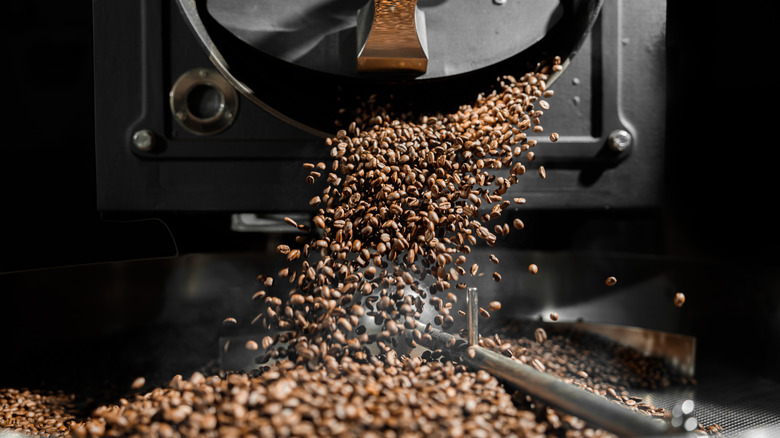The 3 Waves That Define Coffee History
In cities and small towns throughout America, coffee shops and drive-thrus are commonplace. And, if you can't make it to a coffeehouse or drive-thru, popular coffee chains like Starbucks make cups of java available in airports, supermarkets, and retail stores, ensuring you can get your fix no matter where you go. But, while it may be hard to imagine, there was a time when getting a cup of coffee outside the home wasn't as readily available as it is today.
That's because coffee's history runs deep, and, according to Essense, there are three distinct periods in its history, or three waves, which resulted in big changes in the coffee industry. The Los Angeles Times reports that the "three waves of coffee" is a term that was coined by Trish Rothgeb in 2002, whose resume includes working as a barista and a roaster for 15 years. These three waves, as detailed in the Essense article, are representative of periods when the industry pivoted or the culture of coffee changed permanently.
Coffee as a commodity
What's regarded as coffee's first wave began during the 1800s, when its consumption grew rapidly, per Era of We. And as detailed by Essense, the pivotal point in this first wave came when coffee became a basic item that could be found in almost every household. As noted by Nomad Coffee Club, one of the ways the first wave impacted coffee culture was through wider availability, thanks to large coffee producers such as Folgers, Maxwell House, and Nescafé.
Nomad Coffee Club also highlights how the invention of vacuum-sealed bags helped not only keep coffee fresh but also made it possible for instant coffee to become widely available. With the advent of instant coffee, consumers only needed to add hot water to brew up a cup at home rather than owning a coffee maker, percolator, or other special brewing equipment, as reported by Craft Coffee Guru.
Coffee culture gets a boost from Starbucks
Although cafés date back to the late 17th century, consuming coffee at them didn't catch on in Paris until the 1900s. It wasn't until the 1960s that the trend spread to America, as Coffee or Die explains. The second wave is marked by the shift to consuming coffee at cafés and specialty coffeeshops. Much of this wave was spread through national chains and was capitalized by Starbucks in the 1990s, as Driven Coffee Roasters details.
According to MTPak Coffee, coffee culture became a part of the majority of people's lives during the second wave. The source further details that some of the markers of this time period were centered around creative coffee drinks made with espresso, a unique coffeehouse ambiance, and the level of customer service given by café staff and baristas. Much of this was first introduced to consumers by the Starbucks experience. The Seattle-based chain had a major impact on the industry during a period that took place after becoming a publicly traded company in 1992. By the end of the 1990s, the coffee giant opened 2,500 stores globally, as reported by Britannica.
Coffee's origin and production methods
The third and most recent wave of coffee's history started in the 2000s, and we're still riding that wave today. The hallmarks of the third wave are centered around consumer interest in the origin and production of their brew, according to Driven Coffee Roasters. Today, it's not uncommon to visit a local or national coffee house and have the barista inform you about the coffee's roasting method and where the beans originated.
And this trend isn't limited to the cup you purchase at the coffee shop. When buying beans, either whole or ground, in the supermarket, the coffee's country of origin as well as its roasting method is usually listed on the package, per Alma Coffee. For coffee enthusiasts, the three waves represent a shift that has marked improvements in the accessibility, quality, and flavor of the brew. Looking back on its long history, it's likely that a fourth wave may happen and that coffee lovers everywhere will embrace whatever changes that wave may bring.



